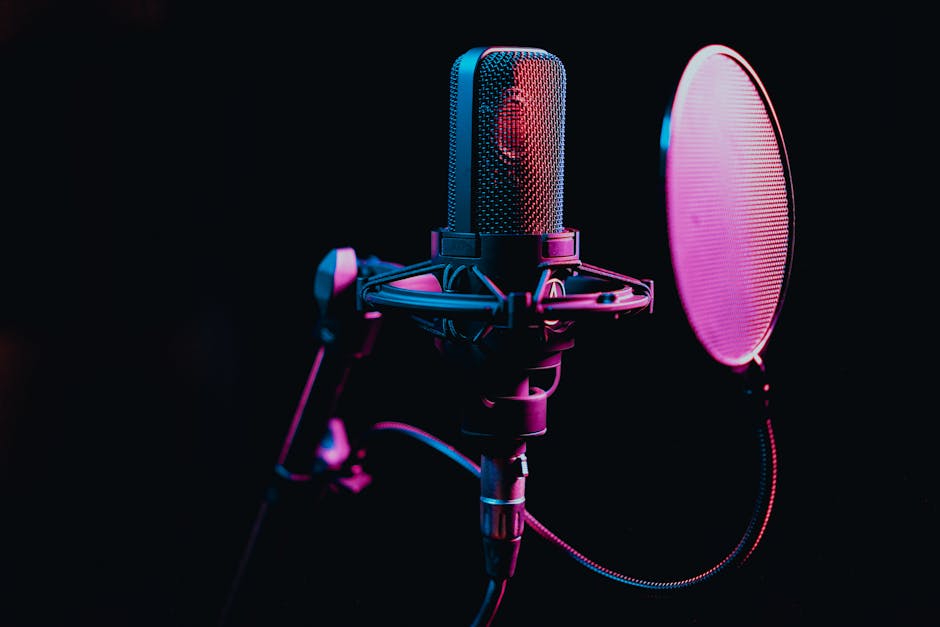How I Edit Podcast Interviews for Smooth Flow and Pacing.
How I Edit Podcast Interviews for Smooth Flow and Pacing
Every podcaster dreams of an interview that feels less like a Q&A session and more like an effortless, captivating conversation. But the reality of raw audio—with its stumbles, tangents, and awkward silences—often falls short of that ideal. This is where the magic of editing comes in. For me, transforming a rough recording into a polished, engaging narrative isn’t just about cutting out mistakes; it’s an art form focused entirely on two critical elements: smooth flow and compelling pacing.
I’ve honed a specific approach over countless hours in the editing suite, an approach that prioritizes the listener’s experience above all else. My goal is to make the editing invisible, allowing the wisdom, humor, and personality of my guests to shine through without distraction. If you’ve ever wondered how to make your podcast interviews sound professional, natural, and utterly unmissable, let me walk you through my meticulous process.
My Blueprint for a Seamless Interview Experience: The Pre-Edit Deep Dive
Before I even touch a single fader or make a cut, my editing process begins with a crucial step: a full, uninterrupted listen-through. This isn’t just passive listening; it’s an active, analytical immersion into the conversation. Think of it as mapping the terrain before embarking on a journey. I’m listening for several key things that will dictate my entire editing strategy:
Understanding the Narrative Arc
Every good interview, even a casual one, has an underlying story or a series of core points. I identify the main themes, the moments of revelation, the humorous anecdotes, and any critical information the guest shares. This helps me understand the intended “flow” of the conversation as it happened organically, even if it later needs refinement. I’m essentially looking for the emotional and informational beats that form the backbone of the episode.
Spotting the Hiccups: My First Pass for Problem Areas
During this initial listen, I make mental (and sometimes physical) notes of problem areas. These include:
- Repetitions: Where the guest or host reiterates a point unnecessarily.
- Long pauses: Not just natural breathing room, but those awkward silences that break the listener’s concentration.
- Verbal tics: The “umms,” “uhhs,” “you knows,” and “likes” that pepper natural speech but can become distracting in audio.
- Tangents: Fascinating but off-topic diversions that, while sometimes charming, can derail the core message or extend the episode beyond its ideal length.
- Technical glitches: Mic bumps, sudden loud noises, feedback, or inconsistent audio levels. While my focus here is flow and pacing, noting these helps me address them efficiently later.
This comprehensive first pass allows me to approach the actual cutting with a clear vision, ensuring I preserve the essence of the conversation while smoothing out its rough edges.

Sculpting the Dialogue: My Techniques for Taming Verbal Clutter and Awkward Pauses
Once I have my mental map, I dive into the granular work. This is where I meticulously clean up the audio, focusing on making every word count and every transition feel intentional. My approach here is surgical, aiming for transparency – the listener should never notice my handiwork.
The core of achieving smooth flow often lies in what I call “invisible cuts.” This means removing distractions without making the edit audible. It’s a delicate balance of precision and preserving natural speech patterns. I often use a combination of silence removal, selective word cutting, and crossfades to achieve this.
Excising the “Ums,” “Uhhs,” and Lingering Breaths
These verbal fillers are the bane of smooth flow. While a natural part of human speech, they accumulate quickly in an interview and can make a speaker sound hesitant or unprepared. My technique involves:
- Zooming in: I zoom tightly into the waveform to identify these sounds. They often have a distinct visual signature.
- Careful deletion: I select and delete them, paying close attention to the surrounding audio. The key is to remove them without creating a sudden jump in the audio or an unnatural silence. Sometimes, a tiny sliver of ambient room tone needs to be left or copied to fill the gap.
- Breath management: Similarly, overly loud or frequent breaths can be distracting. I often reduce their volume rather than deleting them entirely, as complete removal can make speech sound unnatural.
Tightening the Gaps: Managing Pauses and Dead Air
Not all pauses are bad; some are essential for emphasis or allowing a thought to sink in. However, excessively long or awkward silences can kill pacing and make an interview feel stilted. I approach this by:
- Shortening rather than deleting: Instead of removing a pause entirely, I often shorten it to a more natural length (e.g., from 3 seconds to 0.75 seconds). This maintains the speaker’s rhythm but keeps the conversation moving.
- Listening for intent: Was the pause for dramatic effect? To gather thoughts? Or was it just dead air? The intent guides my editing decision.
- Crossfades: When joining two pieces of audio after a pause reduction, a tiny crossfade (a few milliseconds) can prevent a harsh cut and ensure a smooth transition.
Pruning the Wordiness: Eliminating Redundancy
Sometimes, a speaker takes two sentences to say what could be said in one. My job is to identify these redundancies and trim them without losing the original meaning or the speaker’s voice. This requires a deep understanding of the conversation’s context. For instance, if a guest says, “I think, you know, I believe that it’s really important to consider,” I might edit it down to “I believe it’s important to consider,” preserving the core message with greater conciseness.
Orchestrating the Rhythm: How I Manipulate Time and Silence for Engaging Pacing
Pacing is the heartbeat of any great audio experience. It’s about how quickly or slowly the information is delivered, the rhythm of the conversation, and the ebb and flow of energy. Achieving dynamic pacing involves more than just removing filler; it’s about consciously shaping the listener’s journey through time.
The Strategic Use of Silence
While I aim to remove awkward silences, I also understand the power of intentional silence. A well-placed pause can:
- Build suspense: Before a big reveal or a surprising statement.
- Emphasize a point: Allowing a profound thought to resonate.
- Provide breathing room: Giving the listener a moment to process information before the next topic begins.
I actively listen for these opportunities, sometimes even *adding* a fraction of a second of silence to enhance the impact of a particular moment. It’s about creating a dynamic rhythm that keeps the listener engaged, rather than a relentless, unbroken stream of speech.
Accelerating and Decelerating the Conversation
Not every part of an interview needs to move at the same speed. I consciously adjust the pacing based on the content:
- Speeding up: During less critical transitions, recaps, or when the conversation is simply meandering, I might tighten cuts more aggressively, reducing pauses and removing redundant phrases to pick up the pace. This is particularly useful in introductory or concluding segments that need to move efficiently.
- Slowing down: When a guest is sharing a particularly insightful story, a vulnerable moment, or complex information, I might allow slightly longer pauses or less aggressive cuts. This gives the listener time to absorb and connect with the




Post Comment